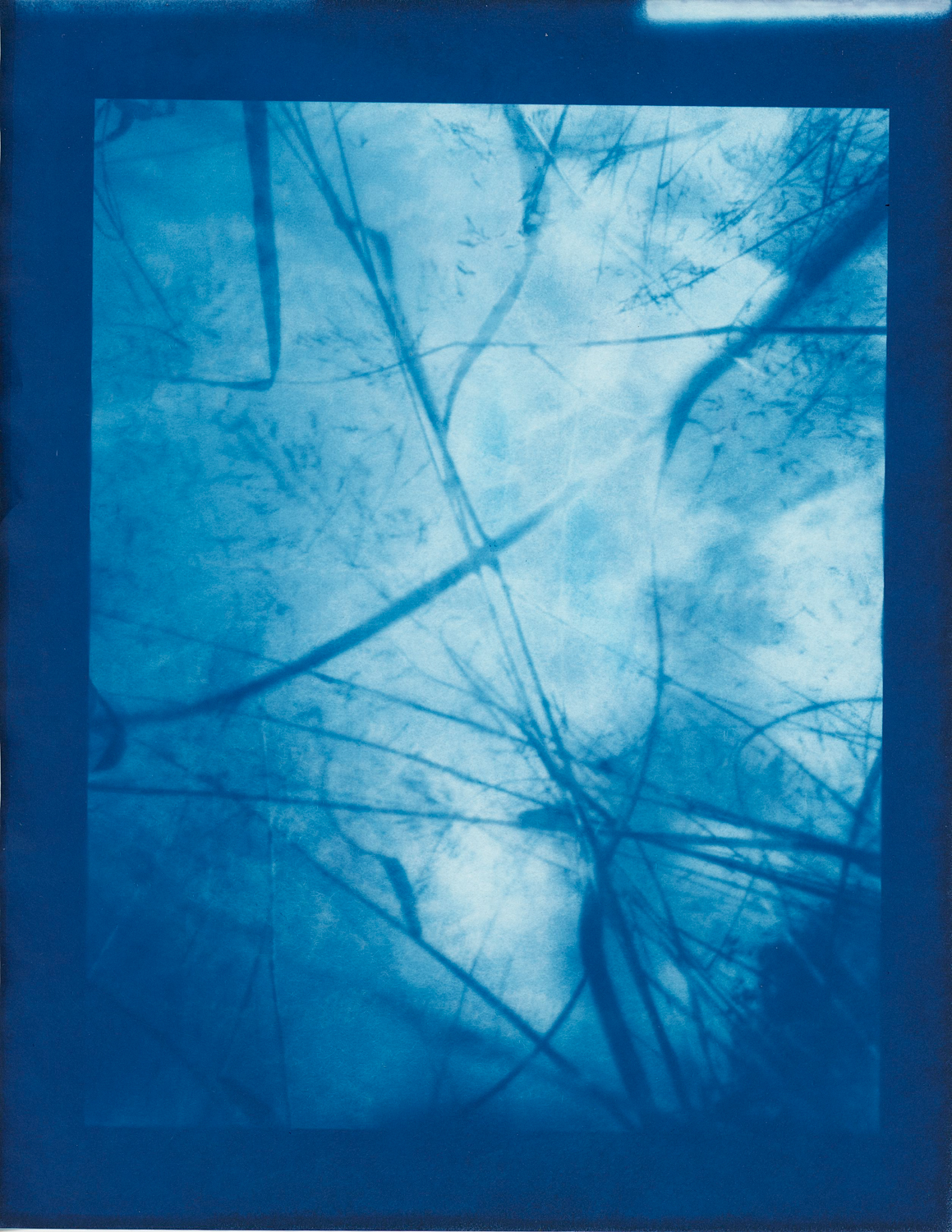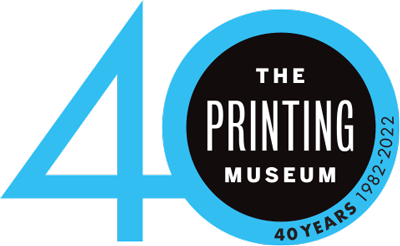
- This event has passed.
Cyanotypes Using Negatives

February 3: 6:30 – 8:00 PM online via Zoom
February 10: 6:30 – 8:30 PM
February 17: 6:30 – 8:30 PM
All times are US/Central time zone
Learn to make photographic prints from digital negatives using the water-based cyanotype process and UV light!
This hybrid workshop will be held weekly over 3 sessions, starting with a one-and-a-half-hour introduction, instructions for creating digital negatives using Photoshop, and presentation of the techniques (with a handout) over Zoom. The following two weeks will be two-hour in-person sessions at The Printing Museum
Caroline will briefly demonstrate coating the paper as well as bringing ready-coated paper so that you can get started right away! Several sheets of pre-coated paper and transparency film for printing negatives will be provided. All cyanotype chemicals and paper will be provided. For this workshop we will be printing using a UV exposure unit – it is more accurate but much slower than sunshine. Each attendee can present their work and we can troubleshoot problems. A suggested materials list will also be provided a couple of weeks before the first class, covering the various negative films, pens for hand-drawing negatives, suggested papers, and where to purchase cyanotype chemicals.
Topics will include:
- creating digital negatives and printing on film (a technical bit!)
- cyanotype ratios and wash techniques for printing images (another technical bit!)
- how to determine exposure time no matter your UV source
- troubleshooting printing issues
- suggested papers for getting good prints
Registration: $140
Members receive a 10% discount. Become a member today!
Members must log in to activate the discount. If you don’t have a login, please contact us at info[at]printingmuseum.org.
Pre-requisite: This workshop builds on our “Cyanotype photograms” workshop, going deeper into some of the technical aspects of cyanotype printing. We recommend that you have attended either our workshop or a similar one elsewhere before joining us.
Recommended Supplies:
- Cyanotype chemistry (this will come pre-mixed at 20g/100ml (A) and 8g/100ml (B) and Caroline will supply instructions to adapt this to a specific dilution used for transparency printing). Suggested options:
- Photographer’s Formulary http://stores.photoformulary.com/cyanotypes-liquid-original/
- Jacquard https://www.amazon.com/Jacquard-JCY1100-Cyanotype-Set/dp/B010MN312S/ref=sr_1_3?dchild=1&keywords=cyanotype&qid=1619561355&sr=8-3 (also often available in art supply stores)
- Bostik and Sullivan https://www.bostick-sullivan.com/cart/758.html
- Paper: Needs to be sturdy enough to stand up to soaking in water. Good quality cotton rag papers work well in general. Ideally, not a ‘buffered’ paper – cyanotype does not like alkaline surfaces! Suggested: Arches Text Wove, Arches Laid and most relatively smooth watercolor papers.
- Transparency film: Fixxons negative film for inkjet: https://www.amazon.com/Fixxons-Digital-Negative-Contact-Printing/dp/B083GCML5C/ref=sr_1_2?dchild=1&qid=1619820724&sr=8-2&srs=5767636011
- Zig pens: For drawn or handwritten transparencies Caroline uses Zig opaque pens on overhead transparency film (available at office supply stores or Amazon). https://www.markersupply.com/zigopfipe.html
- Other
- Hake or other wide, soft brush
- A board and sheet of glass/plexiglass larger than your paper (NB: be careful that the glass/plexi does not have a UV filter coating!). Simple clip photo frames work great and are art supply stores
- Large bulldog clips – Caroline uses the 3 inch version of these: https://www.amazon.com/X-ACTO-Bulldog-Clips-Inches-Box/dp/B0006HVPXS
- A container larger than your paper that you can fill with water (shallow is preferable but deep will work) to use as a wash tray – this can be a plastic box or even a bake-and-go type aluminum foil tray
Location: the first workshop session will meet online via Zoom; the following week’s session will meet in person at The Printing Museum’s NEW location (3121 San Jacinto St).
Cancellations and refund requests must be made a minimum of three days (72 hours) prior to the first class date, by calling (713) 522-4652.
